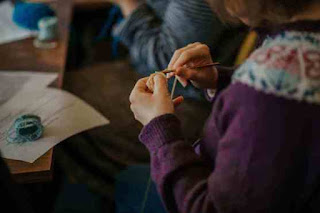Wellbeing
Archived from May 2015
It’s an intangible concept, wellbeing… it carries with it
notions of happiness or comfort and research in this area is the sort of thing
that makes people roll their eyes and lament what rubbish academia is all
about. However, if my research is connected to wellbeing, I need to have
some kind of clarity about the term. What I am discovering is that no-one
can decide (Dodge et al, 2012; Statham and Chase, 2010; Pollard and Lee,
2003) - even about its grammatical construction… hyphen, no hyphen? This
uncertainty is hardly helping my sense of well, you know...
Governmental organisations - and not just in the UK - have expressed
the need to focus on wellbeing. Were you aware that it was nearly a
decade ago, that David Cameron (2006) gave a speech about his commitment - not
to GDP, but GWB - the general wellbeing of the people? (Hmmm, yes, quite).
Perhaps it is inevitable that the terms set out here are related to
economics and managing austerity:
“wellbeing evidence can not only help target public spending
more effectively at improving people’s lives, but in many cases has the
potential to deliver significant long-term savings by reducing demand on public
services” (Berry, 2014, p.1)
Wellbeing in the 2014 all-party parliamentary report is
posited as an outcome of something financial - a benefit that goes hand-in-hand
with a comfortable income and purposeful employment, perhaps as one of the
Wellbeing Analysts recommended (ibid., p.3) for each governmental department.
Apologies, my left-leaning petticoat is showing...
Let’s return to potentially safer ground and think about
Ancient Greeks for a bit. Epicurus was the chap who wrote first on
hedonia - the reduction of pain and prioritisation of happiness or pleasure,
although not necessarily the wild and indulgent behaviour, disregarding of
others, which we have been led to understand by this term. Aristotle appeared
more focused on eudaimonia, where complex ideas about fulfillment through
practical, rational actions such as supporting friendships perhaps reflect the
more nuanced ways we may now perceive wellbeing (Waterman, 1993).
The tensions between these ideas have given rise to some
complex and confusing descriptions of what wellbeing may be. Dodge et al
(2012) provide a really useful overview of these debates... is wellbeing a
satisfaction with - or quality of - life, the fulfilment of goals, an absence
of illness or a sense of ‘normality’? The definitions become
distorted as we grapple with questions of whose perspective? whose values?
Seligman (2011) tried to draw these nuances together in exploring
elements such as engagement with others and finding accomplishment in one’s
actions, which may not generate ‘happiness’, but are nevertheless important if
one is to flourish. Dodge et al,(2012), in attempting to pin down a
formula for measuring a closely defined definition of wellbeing, suggest that
the key is an equilibrium or balance between one’s psychological, social
and physical resources in the face of challenge.
The World Health Organisation (2014) has focused
particularly on mental health wellbeing - a state in which ‘every individual
realises his or her potential, can cope with the daily stresses of life, can
work productively and fruitfully and is able to make a contribution to her or
his community.’ Some elements here are problematic: We are
not necessarily talented at recognising our own ‘potential’ or the steps we
take towards it (and are we ever ‘done’ with reaching it?) Coping with
‘ordinary’ stresses is also complex - for some, their ‘everyday’ would floor
most of us - caring for a parent with Alzheimer’s, pressing on with life after
a cancer diagnosis or parenting in poverty. For others, this may mean the
courage to simply step outside one’s front door, managing the impact of unseen
illness. Often, working ‘productively’ in a community is an aspect
significantly tied to economics and the world of employment and those
struggling to find or keep work may feel they therefore do not contribute.
It may take the perspective of a friend or colleague to help us
appreciate the contribution we do make - the kind word, the act of generosity, the
offer of time to listen.
#wellMAKING, Craftivist Collective, 2014
I am rather partial to the interpretations of wellbeing
proffered by the New Economics Foundation (NEF). In contrast to the
organisational name, elements to support wellbeing appear more to do with one's
spirit than finance or employed work - including the need to
Connect and enrich one’s experience through social relations, Be Active in
anything from walking to dancing, Take Notice, catching sight of the beautiful,
Keep Learning, to increase competency, sociality and self-esteem and to Give,
sharing in mutual reciprocity (Thompson and Aked, 2011). This is not
merely fluffy idealism. Wellbeing does have something to do with
reflective mindfulness and may not be entirely to do with being ‘happy’ -
although anecdotally it probably helps. Michaelson et al (2009), also
writing for NEF, focus on a dynamic approach to maintaining a sense of
wellbeing and capacity for resilience through being vitally engaged in
activities which make us feel competent.
What this has to do with knit and crochet needs to be
explored in more detail for a post over on Recovered Threads, especially as in
June I am hosting some 'sit and stitch' workshops for the LAHF / RSPH
Creativity and Wellbeing Plus Week at Sheffield Hallam University and
online... I'll put a link here when it's written. If you are around for
the workshops - digitally or physically, come and join the conversation.
References
Berry, Christine (2014) Wellbeing in Four Policy areas.
Available at:
http://b.3cdn.net/nefoundation/ccdf9782b6d8700f7c_lcm6i2ed7.pdf
Cameron, David (2006) Speech to Google Zeitgeist Europe.
Available at: http://www.theguardian.com/politics/2006/may/22/conservatives.davidcameron
Dodge, Rachel; Daly, Annette, P.; Huyton, Jan and Sanders,
Lalage, D. (2012) The Challenge of Defining Wellbeing. International Journal of
Wellbeing 2 (3), pp.222-235.
Michaelson, Juliet; Abdallah, Saamah;
Steuer, Nicola; Thompson, Sam and Marks, Nic (2009)
National Accounts of Well-being: bringing real wealth onto the balance sheet.
Available at:
http://www.nationalaccountsofwellbeing.org/public-data/files/national-accounts-of-well-being-report.pdf
Pollard, Elizabeth, and Lee, Patrice (2003) Child
Well-being:a systematic review of the literature. Social Indicators Research 61
(1) pp.9-78.
Seligman, Martin (2011) Flourish - A new understanding of
happiness and well-being - and how to achieve them. London: Nicholas Brealey Publishing.
Statham, June and Chase, Elaine (2010) Childhood Wellbeing:
a brief overview. Available at:
https://www.gov.uk/government/uploads/system/uploads/attachment_data/file/183197/Child-Wellbeing-Brief.pdf
Thompson, Sam and Aked, Jody (2011) Five Ways to Wellbeing:
New applications, new ways of thinking. Available at:
http://www.neweconomics.org/publications/entry/five-ways-to-well-being-new-applications-new-ways-of-thinking
Waterman, Alan S. (1993) Two conceptions of happiness:
Contrasts of personal expressiveness (eudaimonia) and hedonic enjoyment.
Journal of Personality and Social Psychology 64 (4) pp.768-691.






Comments
Post a Comment